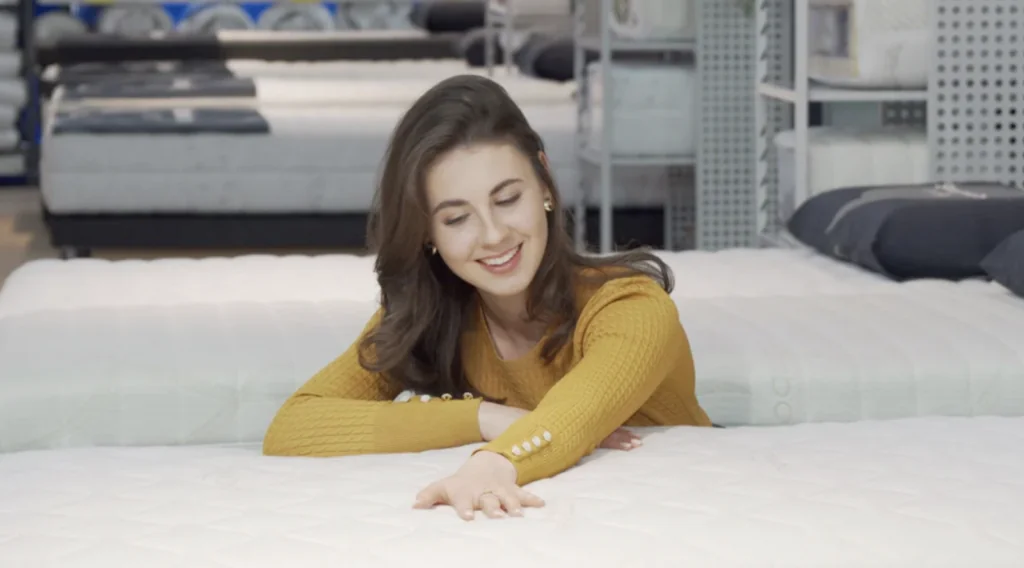Discover the Different Kinds of Bed Sizes: Find the Perfect Fit for Your Room
You spend approximately one-third of your life asleep in your bed, which is why choosing the ideal bed for you is essential. But with all the kinds of bed sizes, how do you find the perfect one for you and your room?
We know that finding a new mattress among the various sizes is not always easy, and nothing affects your daily performance more than sleep. It can also be difficult to function after a restless night. In this article, we’ll discuss the different kinds of bed sizes on the market. And if you want to create the ultimate sleep environment, with the right bed and a soothing newborn white noise machine, you can drift off faster and enjoy deeper rest every night.

Why Size Matters: Matching Your Bed to Your Space and Sleep Needs
There are many things to consider when it comes to choosing a bed: durability, bedroom space, and size are top of many buyers’ list. It is important to choose the right bed size because it directly impacts your comfort and how well you sleep. If your bed is too small, it can leave you cramped and restless, while a too large bed might overpower your space. To avoid this, you should go for the bed size that perfectly fits your room and supports your sleep habits. Being familiar with the kinds of bed sizes available on the market will help you make a choice that enhances both your comfort and your bedroom space.
Standard U.S. Sizes: Crib, Twin, and Twin XL (The Starter Beds)
If you’re looking for the smallest kinds of bed sizes, there are starter beds designed for babies, kids, and solo sleepers. You can choose from the crib, twin, and twin XL beds. These starter beds are ideal for smaller bedrooms or rooms with ample space available.
- Crib Size Beds
If you’re searching for a bed for your baby, you may consider getting a crib-size bed. But don’t be surprised if you find these beds firmer than adult beds; they are manufactured that way for safety reasons.
A standard crib-size bed measures 28 inches x 52 inches. This is the most common crib mattress size, although there are other, less-popular crib mattress sizes to consider, such as the mini crib mattress that measures 24 inches x 38 inches. A crib mattress can be innerspring or foam. Some other qualities might be easy-to-clean and portability to keep up with all of the changes of childhood.
- Twin Size Beds
Twin-size beds, on the other hand, have dimensions of 38 inches x 75 inches. This bed size is ideal for you if you have a room 7 feet x 10 feet. This bed is one of the most commonly available beds and is also the smallest in the standard sizes.
A twin-size bed is perfect for children and teenagers during their growing stage. However, this bed dimension is not recommended for adults in any case. Its slim size makes it perfect for stacking as bunk beds or fitting them side-by-side in a shared bedroom. For smaller bedrooms, twin-size beds are a great size that will still leave you with some open floor space.
- Twin XL Size Beds
Twin XL-size beds, on the other hand, have dimensions of 38 inches x 80 inches. If you’re eyeing this bed size, you should have at least 7.5 feet x 10 feet of space in your room to accommodate this bed size. This bed size has the same width as a standard twin bed, but with the added 5-6 inches of length.
This bed size is the standard dormitory-sized bed, and its added length gives a bit more room to a single adult. If you want to extend the life of a mattress by having a bed transition from toddlerhood to the teenage years, choosing a twin XL might save you money while ensuring your growing child will have all the space they need. These bed sizes are not only economical, but also maneuverable, and are easy to move across the bedroom.
Double the Comfort: Full and Full XL (Ideal for Solo Adults or Small Spaces)
If you prefer more sleeping space than a twin or twin XL can provide, you can choose from a full-size or full XL-size mattress.
- Full-Size Beds
Full-size beds are a great choice for single sleepers looking for more space to stretch out in their bed. They have dimensions of 54 inches x 75 inches. A full-sized bed is a great compromise between a twin and a queen-size bed. This bed size is great for a single sleeping adult who wants more space to sprawl, or for couples with a smaller bedroom.
The additional space is ideal for growing teens, and is an economical and popular choice for young adults as they transition into their first, and usually smaller, apartments. For parents who choose a full-size bed for their child, it is a great bed size to utilize for a guest bedroom when grown children eventually move out. This bed size is shorter than a queen or king-size bed, so it is good for a sleeper or a couple who does not need a lot of legroom.
- Full XL-Sized Beds
A full XL-sized bed measures 54 inches x 80 inches. It has an extra 5 inches in length compared to a standard full-length. With its length, it can accommodate individuals who are up to six feet six inches tall. Though the regular full-size remains the most popular option. Finding sheets for this size of bed is becoming much easier than it once was.
The Top Tier: Queen and King (The Most Popular Choices for Couples)
Both queen and king-size beds are excellent in comfort and versatility. Their only difference is their size and the type of sleeping experience they provide. If you are choosing between these two, here are their differences:
- Queen-Size Bed
A queen-size bed measures 60 inches x 80 inches and is a popular choice for couples. Most bedrooms can easily accommodate a queen-size bed, but be sure that your bedroom measures at least 10 feet x 10 feet. Individuals who want extra space can also opt for this bed size.
This bed size comes in a split queen option. You can split the bed into two halves, and you and your partner can have your own space and sleep in your preferred style.
- King-Size Bed
This bed size is ideal for individuals who require ample space. A standard king-size bed measures 76 inches x 80 inches. If you have the budget, go for this bed size, especially if you sleep with your children or pets. However, you need at least 12 feet x 12 feet to ensure a king-size bed will fit.
A king-size bed is equivalent to two twin XLs that are placed side by side. If you want extra space to sprawl out, the king bed’s additional width and comfort can make it worth the investment.
The Luxury Level: California King and Specialty King Sizes
If you’re looking for maximum space and comfort, the California King and other specialty king beds represent the height of luxury.
A California King-size bed measures 72 inches x 84 inches. It is 4 inches longer than a standard king-size bed, but it is also 4 inches narrower. Even though a few inches narrower than a standard King, it still has enough sleep space for single sleepers, couples, and even those who sleep with their children or pets. To fit this bed size, you need a room with at least 12 feet x 12 feet dimensions.
Aside from the California King-size bed, there are also other specialty king sizes available on the market: the Wyoming King, Texas King, Vermont King, and Alaskan King. Each of these bed sizes offers more width and length, perfect for big families.
Measuring Your Room: A Crucial Step Before Buying Any Mattress
Before you decide which bed size to buy, you should measure your room first to assess which will fit your room perfectly. If you bought a size too large, it can make your room feel cramped, while one that’s too small might make your room unbalanced.
Start by measuring the length and the width of your bedroom, allotting enough space for walking areas, furniture, and storage. Ideally, you should have at least 3 feet of space around the bed for comfortable movement. Choose a bed size that will not only fit but also enhance your overall room layout.
Height, Weight, and Sleep Partners: Factors That Influence Your Size Choice
When you are choosing among the different kinds of bed sizes, you should consider some factors such as your body type and sleeping situation.
For taller individuals, it is recommended to go for a Twin XL or California King, as these bed sizes both offer better legroom and comfort. If you are a heavy sleeper, you may prefer wider options, such as Queen or King, as they provide more support and space to move freely during sleep. If you share your bed with your partner, children, or pets, consider buying a larger mattress to prevent crowding and ensure that everyone is getting a good night’s sleep.
International Differences: Quick Notes on UK/European Sizing vs. U.S. Standards
If you’re shopping for a bed outside the U.S., keep in mind that bed sizes vary by region. While the U.S.’s measurements are in inches, those of Europe and the UK are in centimetres, not to mention their standard sizes differ slightly.
For example, a UK King is smaller than a U.S. King, and a European Double is a bit wider than the U.S. Full. The European sizes, like Single, Double, and King, are based on metric dimensions and may not fit U.S. bed frames or bedding perfectly. Always check the dimensions when buying abroad to make sure your mattress and bed frame match perfectly.





